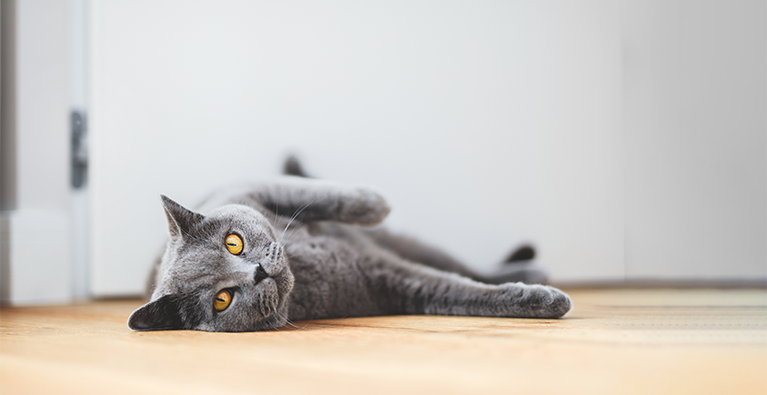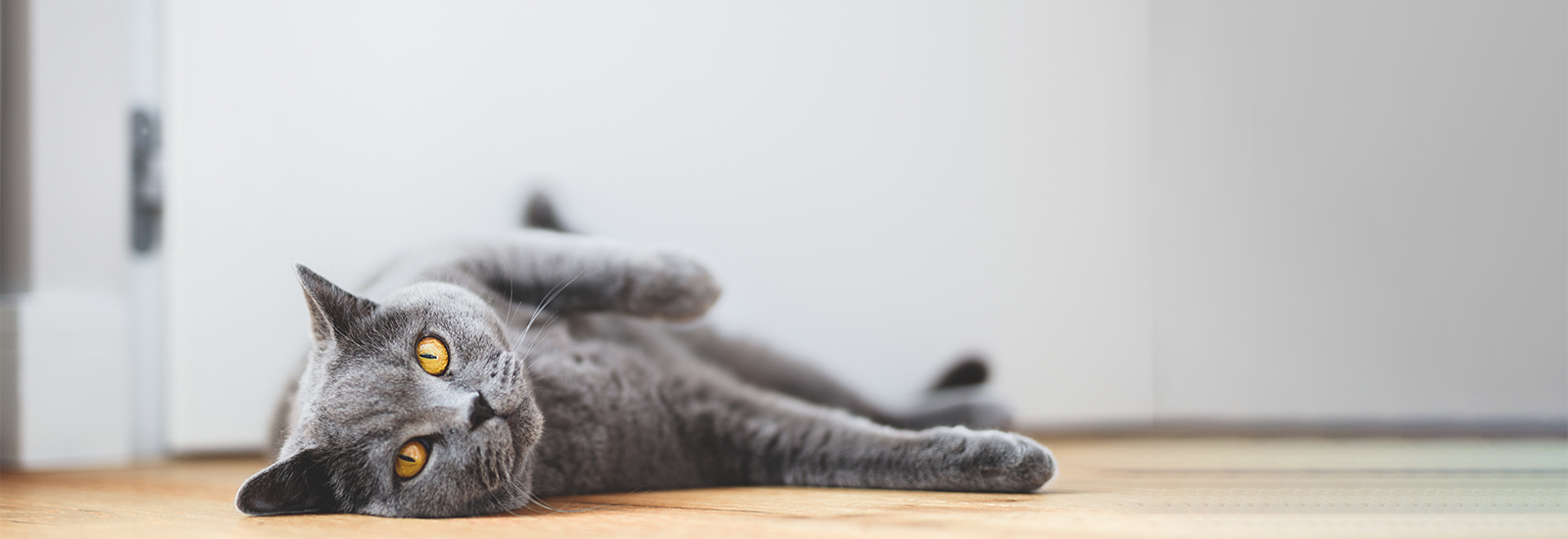British Shorthair
The British Shorthair, also known as the British Blue cat, was originally an ordinary domestic cat. Over time, however, various cross-breeds have altered both their appearance and their nature, which has become calmer and more affectionate.
Profile of the British Shorthair
- Size medium
- Weight female: approx. 4.5 kg, male: approx. 6 kg
- Origin Great Britain
- Build muscular, stocky
- Length of fur short, dense
- Colour of fur varied
- Grooming medium
- Behaviour gentle, calm
- Character easy-going, adaptable
Appearance and character of the British Shorthair
The British Shorthair is the perfect example of a cuddly cat breed. It would be an ideal model for a soft toy cat, because it has no square or angular features at all, but everything is round: big round eyes, a round head, rounded ears and a body with gentle curves from head to tail. Its short legs and short tail complement its attractive appearance. It looks compact, but at the same time sturdy and strong. It is quite the opposite of super-slim cat breeds such as the Oriental Shorthair or the Birman. With a British Shorthair, you have a very cuddly cat that is lovely to touch. Its coat is a real dream: it is short and dense, but it does not lie flat. In fact, the thick undercoat ensures that the coat stands out from the body. The breed standard states that “the texture should have a crisp, plush feel to it”. And this is exactly what you will experience if you are lucky enough to be able to cuddle a British Shorthair.
Many people associate the British Shorthair with the colour blue (hence the alternative name British Blue), whereby this actually refers to the uniform grey colour of its fur. The British Shorthair does, however, come in a wide variety of colours. These include pure white, fawn, cinnamon, cream, red, purple, chocolate, blue and black. British Shorthair cats can also have two or three colours as well as various patterns and spots. The breed standard is also very open when it comes to eye colour: anything is possible, whether green, copper or blue – or even two different-coloured eyes, for example, one eye blue, and the other copper. In total, the British Shorthair is said to have over 300 colour variations.
The character of the British Shorthair can be just as varied as its colours. Some breeders believe that certain coat colours are associated with specific character traits, but this is unlikely to be the case. In general, the British Shorthair is a rather placid, reserved breed of cat. It likes a cosy environment, but is also highly resistant to stress. It is able to adapt to its home and loves being stroked and cuddled. It also has a gentle nature and likes to play, but tends to not overdo this.
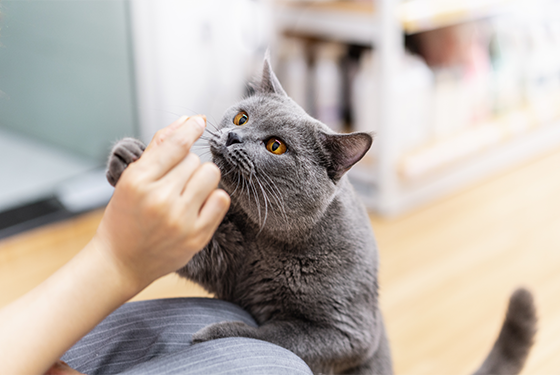
Keeping and caring for a British Shorthair cat
Life with a British Shorthair is usually very relaxed. The breed is neither particularly noisy nor overly fussy or demanding. It loves cosy places, which is why you should make sure that there are plenty of snug spots in your home. It likes to look down from the top of its cat tree, to observe its surroundings from a windowsill or a cat-proof balcony and to snuggle up on the sofa. Owners can find this quite contagious and should never miss out on a cuddling session. However, do not forget to regularly encourage your cat to play, particularly if it tends to be rather lazy, because it could otherwise put on weight. This is not always easy to spot under the fluffy fur. If you are unsure, make sure you weigh your furry friend every now and then and, if necessary, reduce the amount of treats it receives and ensure that it gets plenty of exercise.
Most British Shorthairs are not allowed outdoors. This is not a big deal for cats that are used to being kept indoors. It is, however, advantageous to have two cats and to spend time with them every day. Cats do tend to sleep a lot, but boredom can have a negative effect on their mood. Two cats living together will always be able to interact with each other and it is not really a problem if they have to be left alone occasionally.
Although the British Shorthair is one of the short-coated breeds, it does have a lot of undercoat. As a result, much more fur is lost during the moulting process than with other shorthair breeds. Cats should be combed at least once a week to brush out any dead hair. Fortunately, despite the undercoat, there is hardly any tendency for the fur to become matted. It is too dense and stands out too far from the body for this to happen. Nevertheless, grooming should be intensified during moulting to prevent cats from swallowing too much loose hair when they lick themselves.
Nutrition
Whether it’s a kitten, an adult cat or a senior – the food for a British Shorthair cat should always be of high quality and tailored to its age. Cats are carnivores by nature, so cat food should always contain a high proportion of meaty ingredients. Sugar, flavour enhancers and artificial colourings and preservatives do not belong in the food.
animonda has the ideal food for every stage of your cat’s life. You can choose between kitten, adult and senior cat food. The products are specially formulated to meet the specific nutritional requirements of the different life stages of cats. This provides the best foundation for your pet to enjoy a long and healthy life.
British Shorthair: health
British Shorthair cats do not have any notable hereditary diseases. They are considered to be a healthy and robust breed of cat. This does not, however, mean that they cannot become ill. In order to minimise the risk, responsible breeders always have all the recommended vaccinations, preliminary examinations and any recommended genetic tests carried out. This includes a DNA test for hypertrophic cardiomyopathy (HCM), a heart disease common in cats. In its early stages, it can be treated well with medication. It is also advisable to test kittens for polycystic kidney disease (PKD). If an animal is diagnosed with this hereditary disease, it should not be used for breeding. Therapy is limited to treating the symptoms, because this disease cannot be cured.
History and breeding
In England, just like throughout Europe, domestic shorthairs had been a welcome companion in the home for centuries. Their job had always been to catch mice. The appearance of the cats played no role here. However, in the 19th century, there was a growing interest in cross-breeding cats specifically for the purpose of highlighting certain characteristics. The starting point for this were normal domestic shorthairs, as can still be found today in pure breeding in the form of the European Shorthair. Cross-breeding with Russian Blue and Siamese cats resulted in the first changes. These could be admired by all at a cat show in London in 1871. The winner was a blue tabby British Shorthair.
The cat breed was suddenly the talk of the town. However, the turmoil of the two world wars significantly diminished interest in breeding and made it increasingly difficult. Due to a lack of suitable animals, Carthusian and Persian cats were also occasionally crossed. This led to further changes in appearance. The cats became more compact and fluffier and acquired their rounded form. It soon became apparent that this had made the British Shorthair even more popular than it already was before the wars. People liked this change in appearance. However, it also caused some problems.
Up until the 1970s, the breed had a common standard with the European Shorthair. The changes were, however, so profound that the governing bodies decided to distinguish between the breeds. This was without doubt the right decision, because if you look at a normal domestic shorthair today and compare it with a typical British Shorthair, the differences are striking. The British Shorthair has developed into a fluffy, cuddly cat and is regularly in the top 5 in terms of popularity.
You may also like this
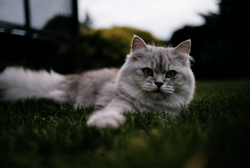
British Longhair
The long-haired variant of the British Shorthair
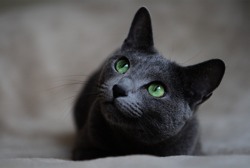
Russian Blue
An affectionate but also stubborn cat breed
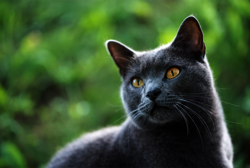
Chartreux
The Chartreux has a calm and even-tempered nature
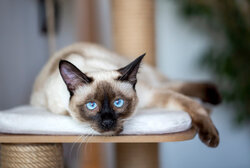
Siamkatze
The noble cat breed is clingy and talkative
